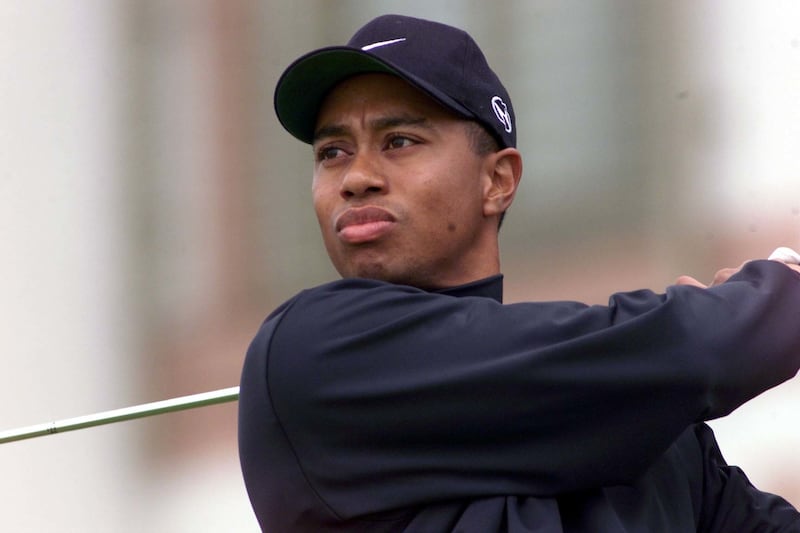Watching Rory McIlroy drive a 373-yard par 4 to set up a four-foot eagle putt at the recent WGC Match Play on the PGA Tour to beat Denny McCarthy, you would have been inclined to think professional golf, or at least the way it was played, was in good shape.
Earlier on the back nine in the same match, McIlroy hit a 420-yard drive on the par-5 12th hole, leaving just 157 yards to the hole.
But as such displays of prodigious driving thrill golf fans, a proposal to reduce the distance the golf ball travels has been hanging over professional golf heading into the first major of the year.
It comes as the famous par-5 13th hole at Augusta will increase by 35 yards this year up to 545 yards at the Masters Tournament, after players such as Bubba Watson had success cutting the corner and leaving just a wedge into the green.
READ MORE
Augusta National spent a reported $25 million (€22.8 million) to purchase the land to lengthen the hole, one of many changes made over the past 20 years to maintain the challenge of Augusta, which has increased in distance over that time by more than 500 yards, to total out at 7,545.
Golf’s rule makers, the Royal & Ancient and the United States Golf Association, revealed plans to put extra limits on how far the ball will fly in top events, to be implemented in 2026 if adopted.
McIlroy himself backed the proposals saying “innovation is a part of every sport. But whenever that innovation outgrows the footprint of the game, that’s when I think we have a problem.”
Proponents of changes to the golf ball argue that limiting the distance could restore balance to the game, amid concerns that some of the world’s great courses have become obsolete.
In 2000, Tiger Woods broke the record for the lowest score in a major with 19 under par at St Andrews. That record lasted 15 years until Jason Day won the PGA Championship at 20 under. Since then, four more majors have been won by a score of 20 under par.
McIlroy is on course to have the longest average driving year in history at 326 yards, almost 40 yards longer than 30 years ago, when no player, not even the famously “Long John” Daly, managed a 290-yard average. Some 167 players on the PGA Tour this season average over 290 yards.
According to US PGA champion Justin Thomas, who criticised the USGA proposals, it’s simply “evolution”, a sign of golf’s move towards athleticism. “We’re training to hit the ball further and faster and if you can do it, good for you.”
If 1999 Tiger Woods, at the peak of his physical condition, had a time machine to go forward 24 years to the PGA Tour in 2023 using the same equipment, he would be 140th in driving distance.

In 2007 (where we have the earliest stat tracking of club head speed), Woods had an average ball speed of 123.9mph, which would still make him fifth in club head speed on tour in 2023. Yet he would only be 59th in driving distance this year. Are that many modern professionals more athletic than peak Tiger Woods?
That is why golfing authorities are looking at equipment at the elite level. The USGA and R&A have already made a local rule to cap pros’ driver length at 46 inches, down from 48 inches. The most obvious change to equipment in modern times to the untrained eye is driver head size. Dust off an old set of clubs and the driver will look more like a modern 5-wood.
But limiting the size of driver heads brings with it other issues of regulation, USGA’s chief Mike Whan said, as the head size would not just be a driver issue, it would affect every metal club in your bag, a “cost prohibitive” and “difficult” rule to implement.
The easiest solution, then, is to look at the golf ball. Under the proposals, a ball struck at a laboratory-controlled swing speed of 127mph must not travel more than 320 yards. The change is expected to reduce hitting distance by 14-15 yards on average for the longest hitters with the highest club head speeds.
Manufacturers take issue at the “bifurcation” of the golf ball, where golf would be divided, in terms of the equipment used, between elite and recreational play. But the USGA and R&A are banking on it being a numbers game – a well-hit drive of 310 yards instead of 330 yards is still a well-hit drive that will excite spectators. Bifurcation is also not an alien concept to sports – American high-school teams in baseball use metal bats whereas Major League teams use wooden ones.
Pádraig Harrington told SiriusXM PGA Tour Radio that rolling back the ball is a no-brainer.
“In terms of cost – the cost of building a golf course, the cost of maintaining a golf course, the speed of play is going to be incredibly improved by reducing the distance, by reducing the size of the golf course and also reducing the amount of waiting time on par-5s and par-4s.
“There’s so many benefits to rolling it back. Old golf courses come back into play, great golf courses come back into play. Environmentally, reducing the footprint. So many reasons to roll it back. It’s dangerous. Golf balls go so far.”
It is not clear if the PGA Tour will implement the proposals. Augusta National have said they will be respectful of the process but have been “consistent in our support of the governing bodies, and we restate our desire to see distance addressed”. All of golf’s major stakeholders now have until August 14th, 2023 to provide feedback as the debate rumbles on.





















